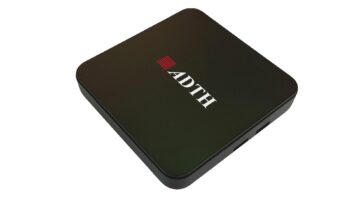New York – Modeo reaffirmed its commitment to push DVB-H mobile TV technology past cellphones into “anything with a screen” and beyond traditional cellular carrier distribution channels to include potential partnerships with cable TV operators, retailers and digital media providers.
“DVB-H will be like Bluetooth in a few years,” said Modeo handset VP Kari Lehtinen. “Every device will get it sooner or later.”
Lehtinen made his comments to analysts, press and media executives during an event where John Kelly, CEO of Modeo parent Crown Castle, said the company wants to embed its technology into “anything with a screen,” including portable game players, portable media players, PDAs, notebook PCs and cellphones.
The race for success in the mobile TV market “won’t be decided by initial distribution deals,” added Modeo president Mike Ramke, underscoring the company’s original intent to incorporate its technology in a variety of handheld devices, not just cellphones. Ramke alluded to distribution deals signed by competitor MediaFLO with the nation’s two largest cellular carriers, Verizon and Cingular. Verizon’s service went online commercially in select markets March 1, the day after Modeo’s event, at $15 a month.
Modeo began beta testing its DVB-H service here in New York in January with “a commercial-grade network [that is] ready for the American consumer,” Kelly said. He called New York City the venue for “an absolutely true test” of Modeo’s capabilities in “one of the largest and most complex markets … from a radio engineering and consumer perspective.”
The beta test involves eight music and six video channels, mostly live TV rebroadcast from cable networks such as Fox. The channels are transmitted from more than 65 towers throughout New York City and parts of the city’s suburbs reaching about 10 million people. Modeo’s content mix will expand when the service is commercially launched with up to 12 video channels and up to 24 audio channels.
Additional content could be provided by a “mediacasting” service that would enable DVR-equipped portables to record selected programs, perhaps delivered overnight. One mediacast channel could deliver 280 shows per day, and a 1GB memory card available today for $9 after rebate could hold nine hours of programming, executives said. Consumers would program their device to filter out the mediacast programs they did not want to record, and the recorded programs would show up on the device’s electronic programming guide (EPG).
To underscore the potential for mass adoption in multiple types of products, Modeo demonstrated DVB-H tuners that fit into the SD Card I/O slots of smartphones. The tuner card sticks out of the slot by only 6mm-8mm to ensure the card’s embedded 2.5mm by 3mm by 12mm antenna remains outside the phones’ chassis to maximize reception. Specific brands or models of portable devices could be developed to be Modeo-ready, enabling consumers to purchase an optional Modeo tuner card later on, he told TWICE.
Lehtinen, however, said he sees more potential in embedding Modeo tuners, antennas and software directly into portable devices in much the same way that notebooks are shipped with Wi-Fi and broadband cellular-data transceivers. That could be accomplished at low cost, he said, because of a bill-of-materials cost of about $10 to add DVB-H to a cellular handset — if the handset already incorporates the audio-video processing power, Windows Media Video player, and high-quality color LCD screen needed for a satisfying mobile TV experience. Typically, such handsets are smartphones retailing for $149 and up, he said.
In devices such as portable media players, which aren’t subsidized by carriers, DVB-H’s cost to the consumer would be about $20, he said.
“Now, it’s all about business decisions, not cost,” he added.
On the network side, cost became even less of a factor, said Ramke, when the FCC allowed the company to boost the peak power output of its transmitting towers 10 times in urban and suburban areas to 20kW and by 20 times in rural areas to 40kW in Modeo’s 30 initial target markets. “We were in good shape pre-waiver,” said Ramke, but the economics are “even better now,” thanks to an “80 percent site savings” per market.
Modeo is continuing to line up content and finance partners to roll out service in the 30 markets, Ramke said.
Clint Stinchcomb, senior VP of HD and mobile programming for the Discovery Channel, said mobile TV will provide “the ultimate in convenience and control.” Although access time, battery life, and cost model hurdles remain, he said, “none are insurmountable.” Discovery is one of the channels offered in the beta test.













